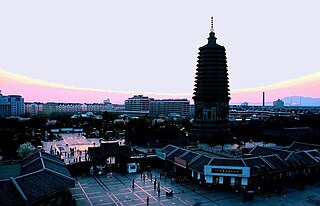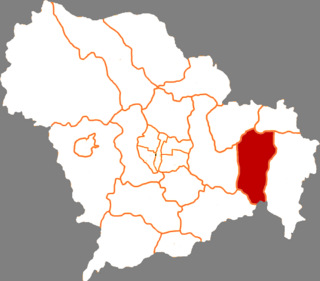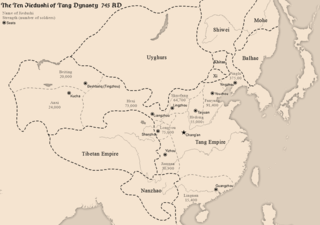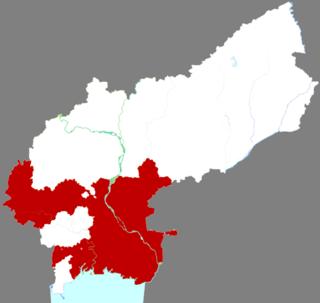Jinzhou (锦州) is a prefecture-level city in Liaoning, China.

Jinzhou is a prefecture-level city of Liaoning province, People's Republic of China. It is a geographically strategic city located in the "Liaoxi Corridor" (辽西走廊), which connects land transportation between North China and Northeast China. Jinzhou is China's northernmost seaport and the coastal economic center of West Liaoning on the north-western shore of the Bohai Sea. The total area under the jurisdiction of Jinzhou is 10,111 square kilometres (3,904 sq mi), most of which is rural, encompassing a coastline of 97.7 km (60.7 mi).

A prefectural-level municipality, prefectural-level city or prefectural city; formerly known as province-administrated city from 1949 to 1983, is an administrative division of the People's Republic of China (PRC), ranking below a province and above a county in China's administrative structure. Prefectural level cities form the second level of the administrative structure. Administrative chiefs (mayors) of prefectural level cities generally have the same rank as a division chief of a national ministry. Since the 1980s, most former prefectures have been renamed into prefectural level cities.

Liaoning is a province located in the northeastern part of China, being the smallest but the most populous province in the region. The modern Liaoning province was established in 1907 as Fengtian or Fengtien province and was renamed Liaoning in 1929, also known as Mukden Province at the time for the Manchu pronunciation of Shengjing, the former name of the provincial capital Shenyang. Under the Japanese-puppet Manchukuo regime, the province reverted to its 1907 name, but the name Liaoning was restored in 1945 and again in 1954.
Contents
Jinzhou—an atonal pinyin romanization of various Chinese prefectures or prefectural seats—may also refer to:
Hanyu Pinyin, often abbreviated to pinyin, is the official romanization system for Standard Chinese in mainland China and to some extent in Taiwan. It is often used to teach Standard Mandarin Chinese, which is normally written using Chinese characters. The system includes four diacritics denoting tones. Pinyin without tone marks is used to spell Chinese names and words in languages written with the Latin alphabet, and also in certain computer input methods to enter Chinese characters.
The romanization of Chinese is the use of the Latin alphabet to write Chinese. Chinese uses a logographic script, and its characters do not represent phonemes directly. There have been many systems using Roman characters to represent Chinese throughout history. Linguist Daniel Kane recalls, "It used to be said that sinologists had to be like musicians, who might compose in one key and readily transcribe into other keys." The dominant international standard for Putonghua since about 1982 has been Hanyu Pinyin. Other well-known systems include Wade-Giles (Mandarin) and Yale Romanization.






